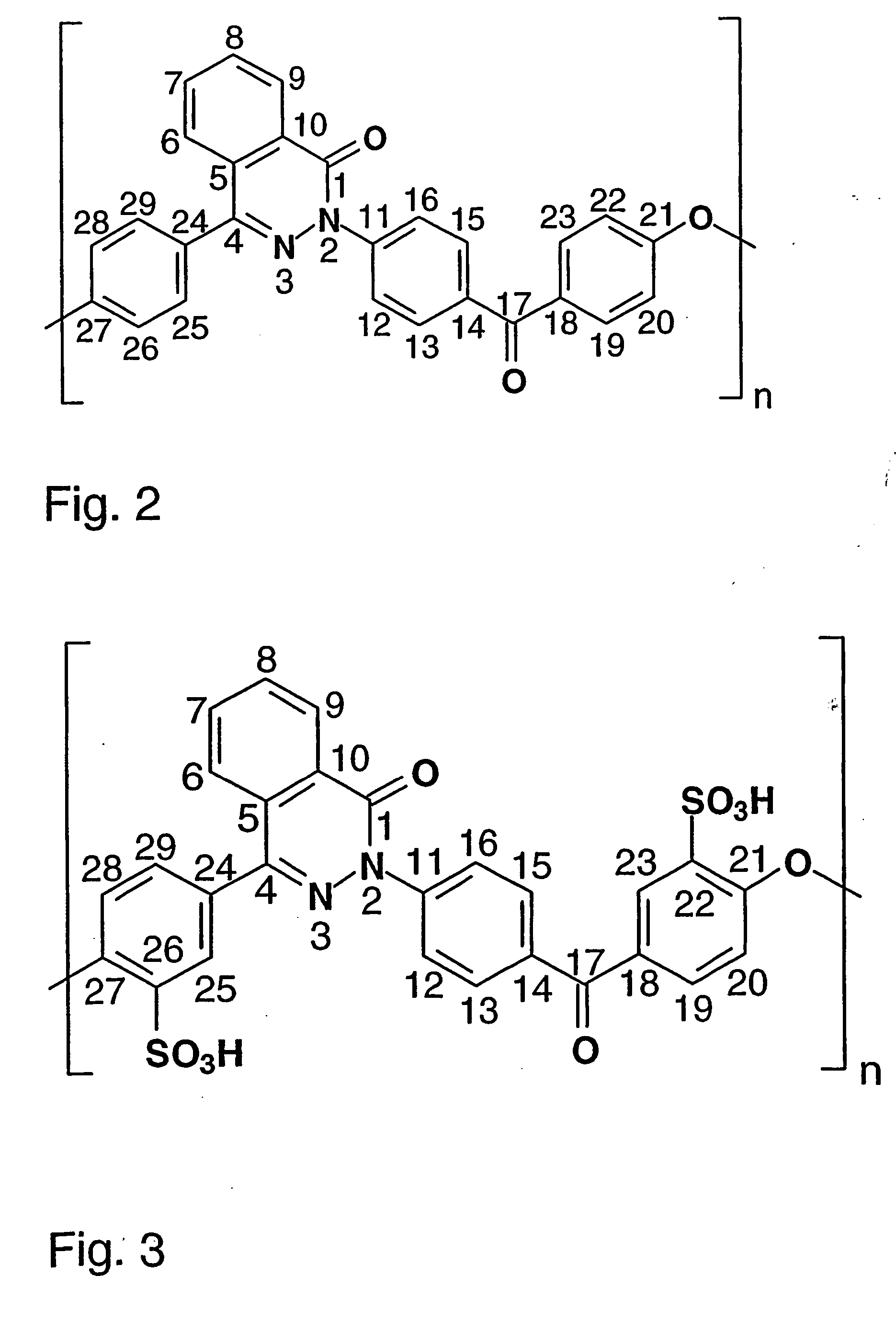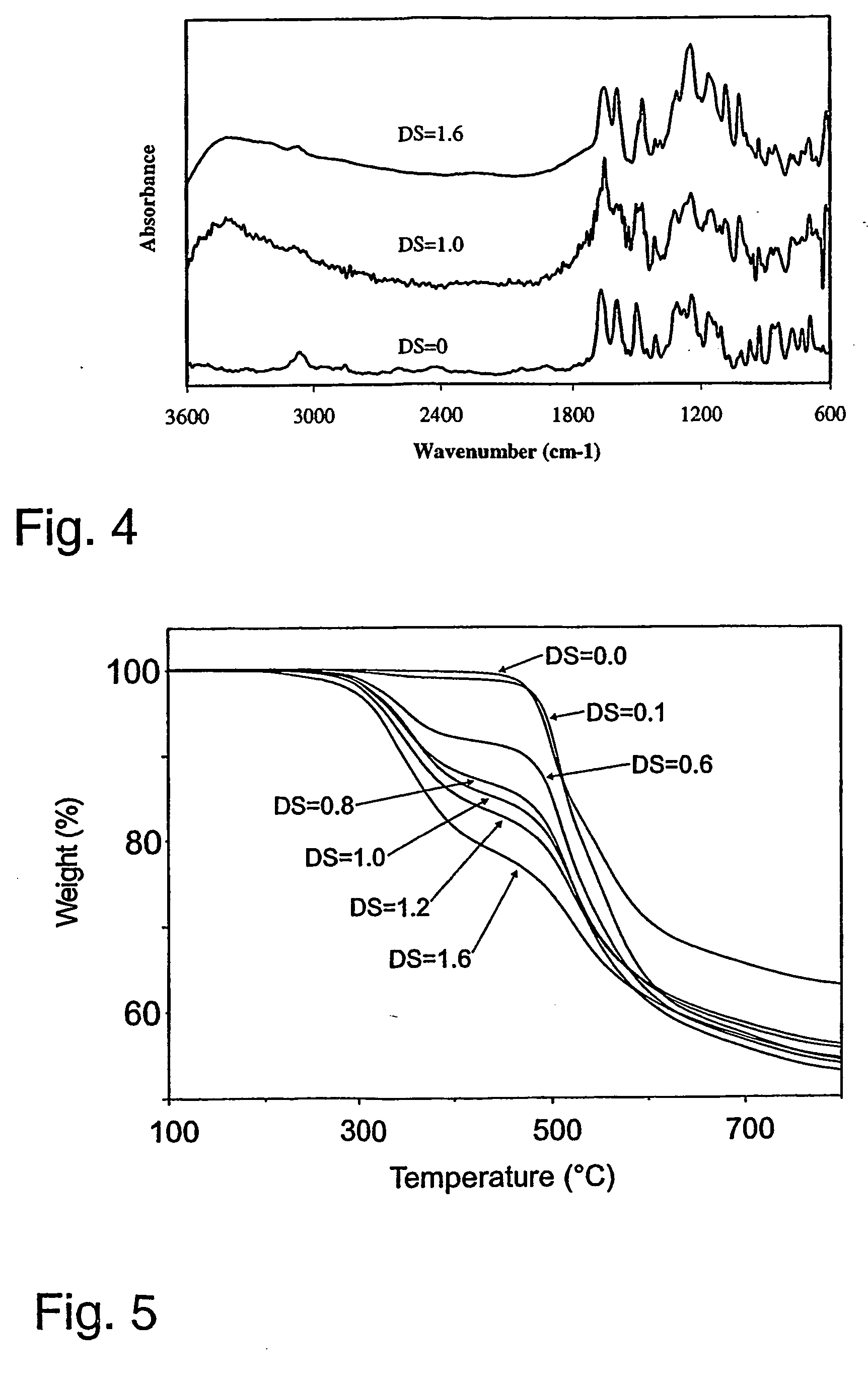Proton exchange membrane materials based on sulfonated poly (phthalazinones)
a technology of phthalazinone and proton exchange membrane, which is applied in the direction of cell components, cell component details, electrochemical generators, etc., can solve the problems of high price of perfluorinated ionomer membrane, limited pems, and inability to exchange sulfonated polymers,
- Summary
- Abstract
- Description
- Claims
- Application Information
AI Technical Summary
Problems solved by technology
Method used
Image
Examples
Embodiment Construction
Materials
[0015] PPEK was synthesized according to the procedure reported previouslyls18,19. All other chemicals obtained commercially were reagent grade and used as received.
Sulfonation Reaction
[0016] In a typical small-scale experiment, 0.5 g PPEK powder was added to a 10 mL mixture of 95-98% concentrate sulfuric acid and 27-33% fuming sulfuric acid under an argon atmosphere and the mixture was magnetically stirred at room temperature (23° C.) for a certain reaction time. The reported reaction time is the total time for polymer dissolution and reaction. After a determined reaction time the reaction medium was poured onto crushed ice and the resulting precipitate was recovered by filtration, washed with deionized water until the pH value was ˜6-7.
[0017] For scaled-up reactions of 30-35 g, an ice bath was needed initially to cool the heat released during dissolution. An amount of 30 g PPEK powder was added to a mixture of 240 mL 95-98% concentrated sulfuric acid and 360 mL 27-3...
PUM
| Property | Measurement | Unit |
|---|---|---|
| conductivity | aaaaa | aaaaa |
| glass transition temperature | aaaaa | aaaaa |
| temperature | aaaaa | aaaaa |
Abstract
Description
Claims
Application Information
 Login to View More
Login to View More - R&D
- Intellectual Property
- Life Sciences
- Materials
- Tech Scout
- Unparalleled Data Quality
- Higher Quality Content
- 60% Fewer Hallucinations
Browse by: Latest US Patents, China's latest patents, Technical Efficacy Thesaurus, Application Domain, Technology Topic, Popular Technical Reports.
© 2025 PatSnap. All rights reserved.Legal|Privacy policy|Modern Slavery Act Transparency Statement|Sitemap|About US| Contact US: help@patsnap.com



